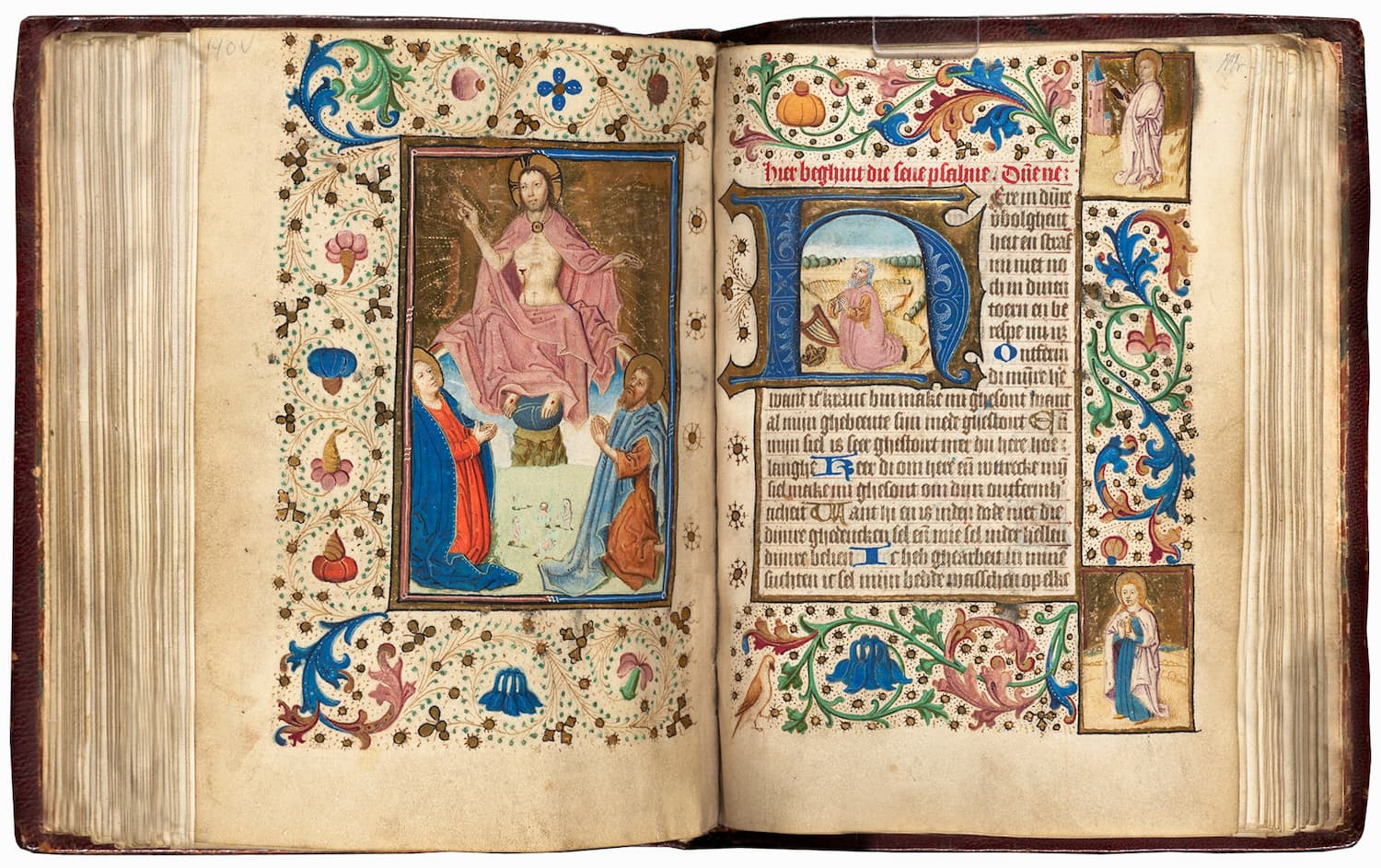Medieval illuminated manuscripts are not just books, but real works of art that encompass the grandeur and mystery of their time. In the Middle Ages, books were a rarity, and each manuscript required enormous effort to create. It was these efforts that transformed the manuscripts into something unique, which over time became a valuable heritage for future generations. But how were these fascinating works created?
The History and Significance of Illuminated Manuscripts
Illuminated manuscripts are books whose pages were decorated with colorful illustrations, ornaments, and decorative elements. The word “illumination” comes from the Latin word “illuminare,” meaning “to light” or “to light up.” These decorations not only gave the books visual magnificence but also symbolized the importance of the text. Initially, such books were created for religious purposes, and their creation was associated with monasteries where monks manually copied and decorated biblical and ecclesiastical texts.
Medieval illuminated manuscripts began to appear in the 5th-6th centuries, but their creation flourished particularly during the Carolingian Renaissance in the 9th century and continued throughout the Middle Ages. These books held not only practical significance but also served as objects of worship and secular art. The importance of these manuscripts is difficult to overestimate, as they became the primary source of knowledge and culture in Europe during that period.
The Process of Creating Illuminated Manuscripts
The process of creating a medieval manuscript was lengthy and labor-intensive. It began with the preparation of materials. The foundation for most books was parchment, a special paper made from animal skin, particularly from sheep and calves. Parchment was durable and long-lasting, which ensured the manuscript’s longevity. The preparation of parchment was a complex process requiring time and effort. Once the material was ready, the next step was to write the text.
The text of the manuscript was created with ink, often made from charcoal, soot, or natural dyes. The page was carefully divided into columns to ensure that the text would not become misaligned. Monks used quills to carefully and evenly write each letter. Scribes worked slowly, creating the text with the utmost precision. The labor of scribes was no easy task, as errors were difficult to correct, and the writing process could take months or even years.
Illumination: The Art That Brought Manuscripts to Life
Illumination was the decoration of the text, adding incredible brightness and expressiveness to it. However, illuminated pages were not limited to just decorations at the ends of paragraphs or headings. Artists working on illumination created entire pictures that accompanied or illustrated the text. Bright and varied paints were used for this, many of which were quite rare and expensive. Some of the most expensive paints included gold and lapis lazuli, which were made from gold and semi-precious stones.
Illumination artists were highly skilled painters, and their work required not only artistic talent but also deep knowledge. Important books often had not one but several illuminated pages, each of which was a true masterpiece. The artists depicted scenes from the Holy Scriptures, biblical motifs, and symbols of faith, such as angels, saints, or prophets.
Symbolism in Illuminated Manuscripts
Illuminated manuscripts were not only a feast for the eyes but also conveyed deep symbolism. Every element of the image, every color, and shape had its meaning. For example, gold in illustrations symbolized divine light and holiness, while blue (created using the expensive lapis lazuli) represented the heavens and eternity. Green was often associated with life, red with the blood of Christ, and white with purity and holiness.
Miniatures, depicting scenes from daily life or royal courts, were also common. These not only served as decoration but also helped readers better understand the texts, as many of them were illiterate and could not read regular texts.
Notable Examples of Medieval Illuminated Manuscripts
Among the most famous medieval illuminated manuscripts is the “Book of Hours” — one of the most well-known and beautiful genres, which was a prayer book containing prayers for each day of the week. One of the most famous examples is the “Book of Hours of the Duke of Berry,” created in the early 15th century, which is considered one of the masterpieces of illuminated manuscript art.
Another example is the “Lindisfarne Gospel” — a manuscript written by monks on the English island of Lindisfarne in the 8th century. Its vibrant and colorful miniatures still impress with their delicacy and attention to detail.
Conclusion
The creation of medieval illuminated manuscripts was not merely a craft, but a true form of art that reflected not only the religious and cultural ideas of its time but also the high level of skill it required. These books remain invaluable heritage, and people all over the world continue to study them today. Ultimately, their beauty and symbolism show that even in an era when books were rare, people sought to convey knowledge in the most beautiful and refined form.

